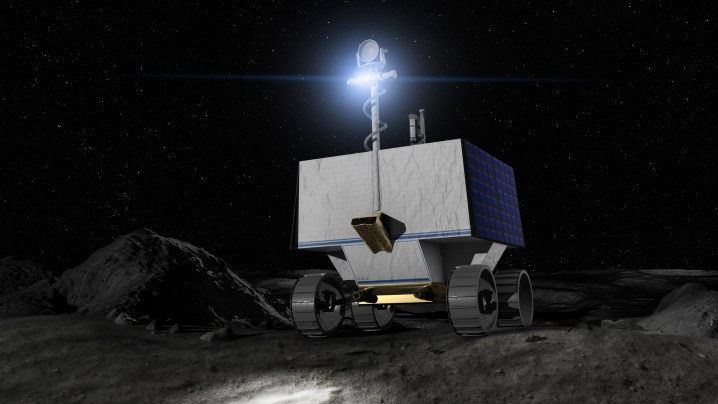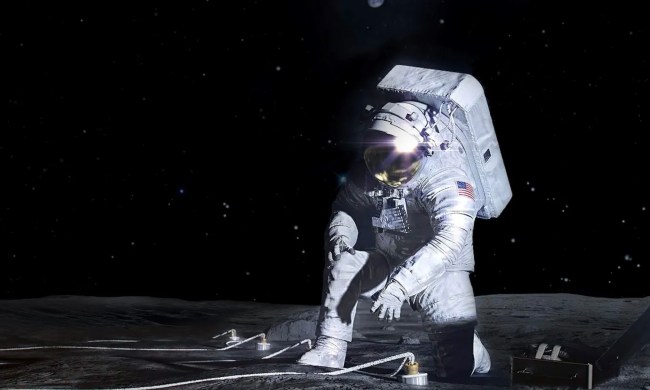NASA has awarded space robotics company Astrobotic a $199.5 million contract to transport its newest lunar rover to the moon.
NASA’s Volatiles Investigating Polar Exploration Rover, or VIPER, will be sent to the moon in 2022 to search for water ice on the lunar surface. Some water ice has been detected in the moon’s polar regions, so VIPER will land on the south pole and search for ice in advance of the arrival of humans under NASA’s Artemis project. Over the course of its 100-day survey, VIPER will collect data that can be used to create maps of where resources like water ice are located on the moon.

To deliver the rover to the moon, NASA will contract with a private company under its Commercial Lunar Payload Services (CLPS) program. CLPS aims to get a number of companies on board to bid on proposals for transporting cargo and research equipment to the moon in future space missions. Current companies involved in CLPS include SpaceX, Blue Origin, Sierra Nevada Corporation, Ceres Robotics, Tyvak Nano-Satellite Systems, and now, Astrobotic, which won the bid to transport the VIPER rover.
“CLPS is a totally creative way to advance lunar exploration,” Thomas Zurbuchen, NASA’s associate administrator for science, said in a statement. “We’re doing something that’s never been done before — testing the instruments on the moon as the rover is being developed. VIPER and the many payloads we will send to the lunar surface in the next few years are going to help us realize the moon’s vast scientific potential.”
NASA’s increasing embrace of the commercialization of space has been contentious, with some observers applauding the move as a way to reduce costs and make the agency more efficient, and others arguing that allowing private companies such influence over scientific discovery is against the principles of freely shared information to advance all humanity.
NASA, however, is throwing its weight firmly behind the concept of commercial partnerships. “The VIPER rover and the commercial partnership that will deliver it to the moon are a prime example of how the scientific community and U.S. industry are making NASA’s lunar exploration vision a reality,” said NASA Administrator Jim Bridenstine.
“Commercial partners are changing the landscape of space exploration, and VIPER is going to be a big boost to our efforts to send the first woman and next man to the lunar surface in 2024 through the Artemis program,” he added.



